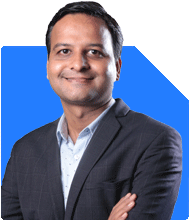Ramalingam Kalirajan |9250 Answers |Ask -Follow
Mutual Funds, Financial Planning Expert - Answered on Jun 19, 2024
He has an MBA in finance from the University of Madras and is a certified financial planner.
He is the director and chief financial planner at Holistic Investment, a Chennai-based firm that offers financial planning and wealth management advice.... more

How can i earn more than 20 k through mf. I have investded 11k, 7.8k lumpsum in hdfc 2 folio same scheme. Thanks
Before diving into specific strategies, it’s crucial to understand your financial goals and timelines. Are you aiming for short-term gains, or do you have a long-term vision? Knowing this helps in aligning your mutual fund investments to meet your objectives. Mutual funds can cater to various goals, including wealth creation, retirement planning, and education funding.
Evaluating Your Current Investments
You’ve invested Rs 11,000 and Rs 7,800 as a lump sum in HDFC mutual funds, within the same scheme across two folios. This is a good start, but it's important to review the performance and diversification of your current portfolio. Evaluate the fund's historical returns, risk-adjusted performance, and consistency.
Diversification: Key to Risk Management
Diversification is essential to minimize risk and maximize returns. Instead of putting all your money in one scheme, spread your investments across different types of funds. This could include equity funds, debt funds, and hybrid funds. Each type of fund has its own risk and return profile. Equity funds, for instance, are high-risk but potentially high-return, suitable for long-term goals. Debt funds, on the other hand, are lower-risk and provide stable returns.
Regular Investments vs. Lump Sum Investments
Systematic Investment Plans (SIPs) are an excellent way to build wealth over time. They help in averaging out the cost of investments and instilling a disciplined investment habit. While lump sum investments can benefit from market lows, SIPs mitigate the risk of timing the market. Combining both strategies can offer balanced growth.
Actively Managed Funds: Benefits Over Index Funds
Actively managed funds are often preferred for their potential to outperform the market. Unlike index funds that replicate a benchmark index, actively managed funds benefit from the fund manager’s expertise in stock selection and market timing. This can lead to higher returns, especially in volatile markets.
Benefits of Regular Funds Through a Certified Financial Planner
Investing through a Certified Financial Planner (CFP) has distinct advantages over direct funds. A CFP can provide tailored advice, ongoing portfolio management, and help you navigate market fluctuations. The professional guidance ensures that your investments align with your financial goals and risk appetite.
Reinvesting Dividends for Compounding
Reinvesting dividends can significantly boost your returns through the power of compounding. Instead of withdrawing dividends, opt for a growth option where the dividends are reinvested to purchase additional units. This allows your investment to grow exponentially over time.
Tracking and Reviewing Your Portfolio
Regularly tracking and reviewing your portfolio is crucial for optimal performance. Assess the funds’ performance against their benchmarks and peers. If a fund consistently underperforms, consider rebalancing your portfolio. A Certified Financial Planner can assist in this review process, ensuring your investments stay on track.
Tax Efficiency in Mutual Funds
Understanding the tax implications of your mutual fund investments can enhance your overall returns. Long-term capital gains (LTCG) on equity funds are taxed at 10% beyond Rs 1 lakh, while short-term gains are taxed at 15%. For debt funds, long-term gains are taxed at 20% after indexation. Strategic investment planning can help minimize tax liability.
Leveraging Technology for Investment Management
Utilizing investment platforms and apps can simplify the management of your mutual fund investments. These tools offer features like automated SIPs, portfolio tracking, and market insights. Staying updated with technology can provide an edge in managing your investments efficiently.
Importance of Emergency Fund
While investing in mutual funds, ensure you have an emergency fund in place. This fund should cover 3-6 months of living expenses. It acts as a financial cushion during unforeseen circumstances, preventing the need to liquidate your mutual fund investments prematurely.
Focus on Quality Over Quantity
Investing in a few high-quality mutual funds is often more beneficial than spreading your money across numerous schemes. Quality funds have a consistent track record, experienced fund managers, and a well-defined investment strategy. They are more likely to deliver stable returns over the long term.
Staying Informed and Educated
Continuously educating yourself about mutual funds and market trends can significantly improve your investment decisions. Attend webinars, read financial news, and follow market analysis. An informed investor is better equipped to make strategic choices and capitalize on market opportunities.
Patience and Discipline: Virtues of Successful Investors
Patience and discipline are key virtues in successful investing. Avoid making impulsive decisions based on short-term market movements. Stick to your investment plan and review it periodically. Over time, disciplined investing can lead to substantial wealth accumulation.
Role of Asset Allocation in Achieving Goals
Asset allocation plays a pivotal role in achieving your financial goals. It involves distributing your investments across various asset classes like equities, debt, and gold. Proper asset allocation balances risk and return, aligning with your investment horizon and risk tolerance.
Understanding Market Cycles and Timing
While timing the market is challenging, understanding market cycles can help in making informed investment decisions. Recognizing bull and bear phases allows you to adjust your investment strategy accordingly. However, it's advisable to focus on long-term growth rather than short-term market timing.
Leveraging Mutual Fund SIPs for Wealth Creation
SIPs are a powerful tool for wealth creation. By investing a fixed amount regularly, you benefit from rupee cost averaging and the power of compounding. This disciplined approach can significantly enhance your returns over the long term.
Importance of Financial Planning
A comprehensive financial plan encompasses all aspects of your financial life, including investments, insurance, retirement planning, and tax planning. A Certified Financial Planner can help create a personalized financial plan, ensuring all elements work together towards your financial goals.
Staying Calm During Market Volatility
Market volatility is inevitable, but staying calm during such periods is crucial. Avoid making hasty decisions based on market fluctuations. Instead, focus on your long-term investment strategy and goals. Historical data shows that markets tend to recover over time.
Benefits of Multi-Cap Funds
Multi-cap funds invest in companies of various market capitalizations, offering a balanced approach. They provide exposure to large-cap stability and small-cap growth potential. This diversification within a single fund can enhance returns and manage risk effectively.
Exploring Sectoral and Thematic Funds
Sectoral and thematic funds focus on specific sectors or themes, like technology or healthcare. While they can offer high returns, they come with increased risk. Invest a small portion of your portfolio in these funds to benefit from sectoral growth while maintaining overall diversification.
Rebalancing Your Portfolio
Regular portfolio rebalancing ensures that your asset allocation remains aligned with your goals and risk tolerance. Market movements can skew your portfolio, leading to higher risk exposure. Periodic rebalancing helps in maintaining the desired risk-return profile.
Utilizing STPs and SWPs
Systematic Transfer Plans (STPs) and Systematic Withdrawal Plans (SWPs) can optimize your investment strategy. STPs allow you to transfer funds from debt to equity in a phased manner, while SWPs provide a regular income stream by withdrawing from your investments systematically.
Understanding Expense Ratios
Expense ratios impact your overall returns. Lower expense ratios mean higher net returns. Compare the expense ratios of different funds and opt for those with reasonable fees. However, don’t compromise on fund quality for lower expenses.
Final Insights
Earning more than Rs 20,000 through mutual fund investments requires a strategic approach, patience, and continuous monitoring. Diversify your investments, leverage SIPs, and seek guidance from a Certified Financial Planner. Stay informed and disciplined to achieve your financial goals.
By following these strategies, you can enhance your mutual fund returns and build a robust financial future. Investing is a journey, and with the right approach, you can navigate it successfully.
Best Regards,
K. Ramalingam, MBA, CFP,
Chief Financial Planner,
www.holisticinvestment.in
You may like to see similar questions and answers below
Ulhas Joshi | Answer |Ask -Follow
Mutual Fund Expert - Answered on Jun 23, 2023
Kirtan A Shah | Answer |Ask -Follow
MF Expert, Financial Planner - Answered on Jul 13, 2023
Ramalingam Kalirajan |9250 Answers |Ask -Follow
Mutual Funds, Financial Planning Expert - Answered on Nov 25, 2024
Nitin Narkhede | Answer |Ask -Follow
MF, PF Expert - Answered on Jan 16, 2025
Dr Nagarajan J S K |1318 Answers |Ask -Follow
NEET, Medical, Pharmacy Careers - Answered on Jun 27, 2025
Nayagam P P |7111 Answers |Ask -Follow
Career Counsellor - Answered on Jun 27, 2025
Nayagam P P |7111 Answers |Ask -Follow
Career Counsellor - Answered on Jun 27, 2025
Dr Nagarajan J S K |1318 Answers |Ask -Follow
NEET, Medical, Pharmacy Careers - Answered on Jun 27, 2025
Prof Suvasish Mukhopadhyay |1821 Answers |Ask -Follow
Career Counsellor - Answered on Jun 27, 2025
Prof Suvasish Mukhopadhyay |1821 Answers |Ask -Follow
Career Counsellor - Answered on Jun 27, 2025
Prof Suvasish Mukhopadhyay |1821 Answers |Ask -Follow
Career Counsellor - Answered on Jun 27, 2025
Prof Suvasish Mukhopadhyay |1821 Answers |Ask -Follow
Career Counsellor - Answered on Jun 27, 2025
Prof Suvasish Mukhopadhyay |1821 Answers |Ask -Follow
Career Counsellor - Answered on Jun 27, 2025
Prof Suvasish Mukhopadhyay |1821 Answers |Ask -Follow
Career Counsellor - Answered on Jun 27, 2025

























